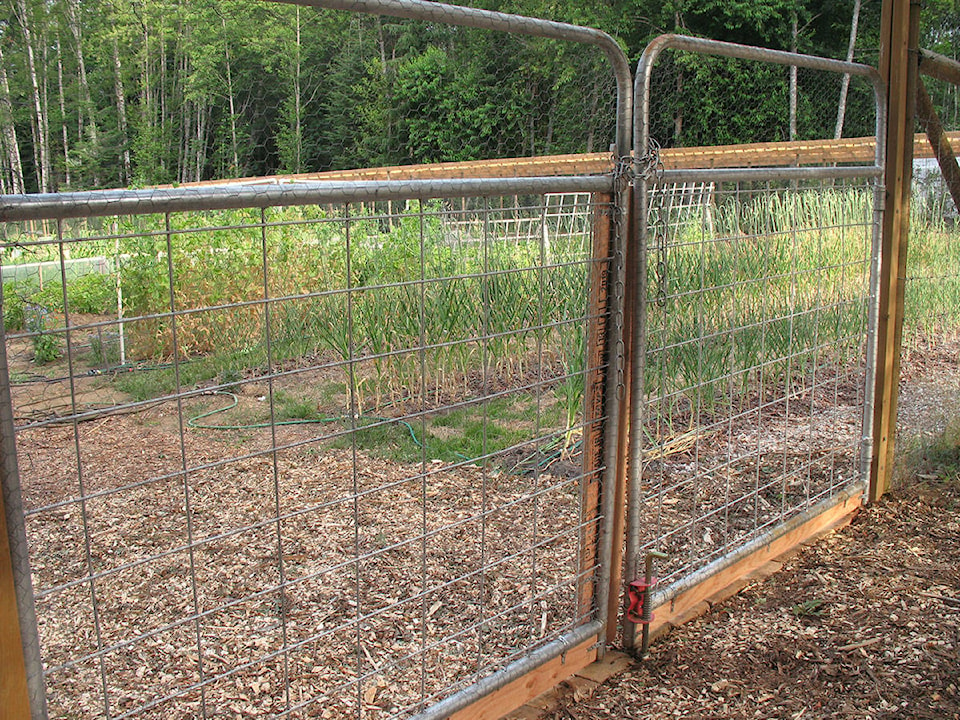By Mary Lowther
Those of us who grew up watching Bugs Bunny outwit Elmer Fudd may have been conditioned to root for the rabbit but once we have a garden our sympathies change rapidly. After all the time and effort spent clearing the land and planting the crop no amount of Hollywood propaganda can disguise the truth: rabbits are the enemy! Warner Bothers alone are not to blame. The crows Heckle and Jeckle were the creation of Twentieth Century Fox, yet another attempt to rehabilitate garden predators. Walt Disney provided his heroic deer Bambi with destructive accomplices like Flower the skunk and Thumper the rabbit, leaving us to wonder what happened to Ralph the raccoon and Slimey the slug.
Understand, I don’t blame the varmints for wanting to share my harvest, but they seem determined to take it all. Constant vigilance is required to protect my borders from undesired aliens who attack them from air, land and underground. Given the versatility of the attacking hordes I have developed a variety of methods that enable me to eat most of what I plant.
For the larger enemies we have erected a six-foot fence, with two strands of barbed wire on top as an added deterrent. At this time this has held both deer and elk at bay. Because the rabbits could jump through the gaps we added a layer of chicken wire, and to prevent digging underneath we laid down four feet of chain link covered by a layer of rock. This left the gate, which has been secured with wire, boards and a pathway of bricks. We have built cages to protect strawberry beds and fruit trees from airborne attack, all of which might leave us with enough time to repel the assault forces that crawl and slither from the soil itself.
I know one gardener who went after her slugs with a weed whacker. She reported satisfactory results, but recommended rubber gloves and eye protection.
David says this reads like a horror story and will deter my faithful readers (both of you) from planting a single seed, but smaller gardens in less rural areas can get away without the extra wires, and I’ve seen orange plastic snow fences work. Plants covered with Reemay usually avoid predation. I haven’t tried it myself but other gardeners have reported success spraying diluted mayonnaise on their plants. Sprinkling human urine, even diluted 10:1 with water, around the perimeter has a record of success, but my garden has 1,100 feet of fence and David doesn’t like beer.
Dog smells deter a host of critters, including deer, and I’ve read that dogs can be trained not to dig in the garden beds. Our dog Monkey, however, seems unacquainted with any of those animals; he also appears to be uninterested in rabbits.
That accounts for the larger varmints, but still leaves the insects. Caterpillars, the bane of brassicas like cabbage, can be kept at bay from inception by starting these plants in flats covered with Reemay to keep out the moths that lay eggs on the seedlings. Once in the garden I cover brassicas with more Reemay until the wasps that kill these caterpillars appear. I take the cover off at this time so I can weed and possibly sow a cover crop like clover under the brassica canopy.
Slugs do a marvelous job in breaking down detritus in the compost heap, but can ruin a garden in hours, so I was mightily interested in seeing how the team managed them in their strawberry patch on The Edwardian Garden, a television series I saw on the Knowledge Network. When they mentioned the slug problem and that they had the solution I glued my eyes to the screen and waited with bated breath. Lo and behold, the fellow came out to the patch with “Sir Francis” the drake in his arms and let him loose. Great. Where am I going to get a duck, and how long before it flies away?
I decided to create a dry, foot wide perimeter around the garden to at least deter the eating machines and continue to use soaker hoses, keeping the soil not under cultivation as dry as possible. This works during our hot summers, and since slugs and sow bugs have become fewer over a few years of using this treatment, my spring crops survive better now too.
I am not without allies in this struggle. Ladybugs eat aphids and dragonflies love mosquitoes. Beneficial insects need water and food, so I provide a shallow dish filled with water and pebbles for the insects to land on and flowers to provide pollen and places to land. I let some overwintering crops go to seed in a bed that never gets watered, so pollinators have at them once they flower and I harvest the seeds. It’s a win/win situation! If one has room, leaving a portion of the garden to run wild gives insect eaters like snakes and frogs a refuge, and they are the best friends we have. David is building birdhouses designed to attract the varieties that prefer bugs to fruit. Once he’s done that, I’ll set him to work building a better scarecrow.
Please contact mary_lowther@yahoo.ca with questions and suggestions since I need all the help I can get.
